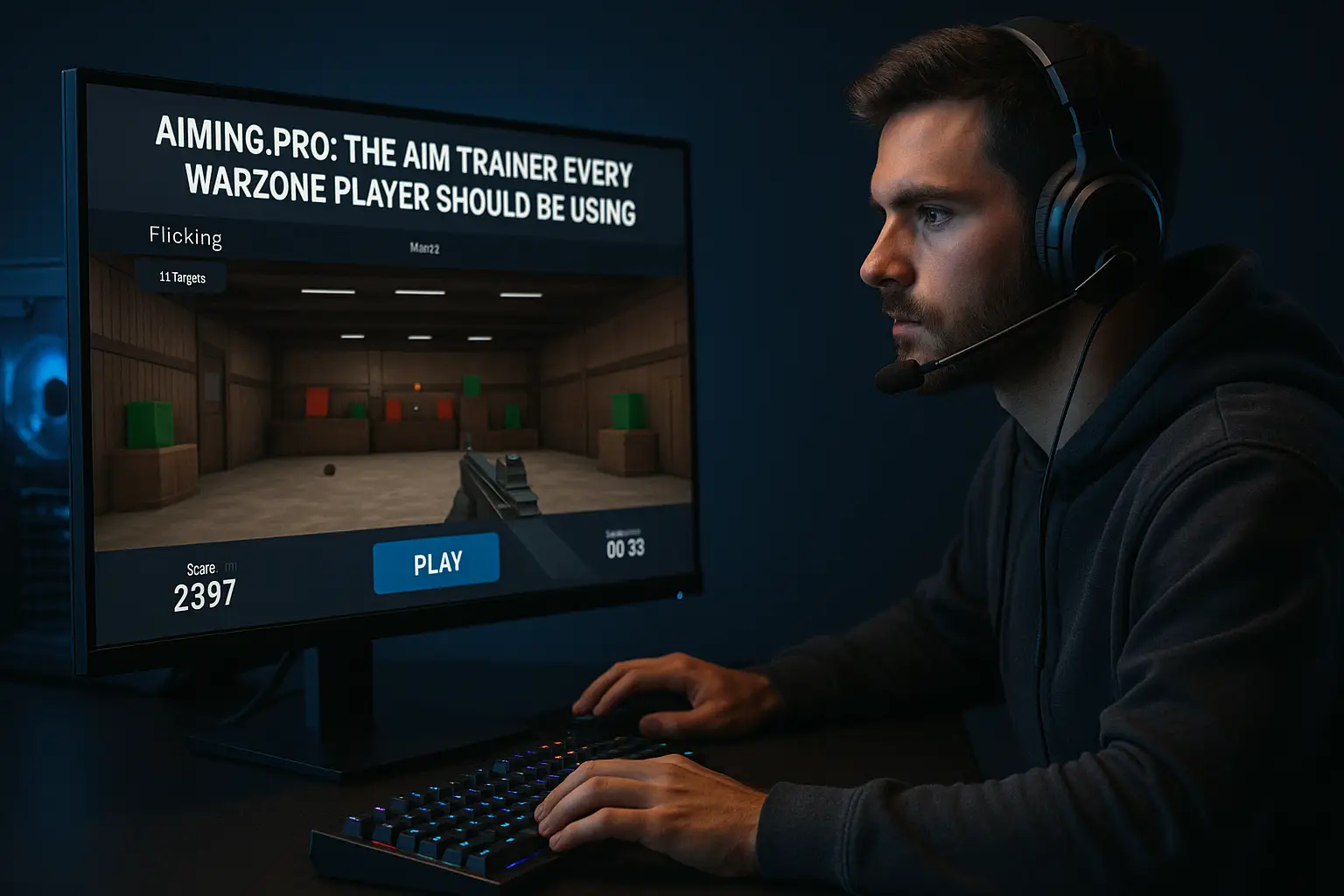
5 Tips to Master the Warzone COD Tactical Layout
Why Every Pro Player Uses the Tactical Layout in Warzone COD What Is the Tactical Layout and How Does It
Gaming controllers play a crucial role in enhancing your console experience. The right controller ensures comfort while providing the precision needed for a seamless gaming session. Choosing the right one for your style can boost your gameplay and minimize fatigue during long hours of play.
Your favorite games deserve a controller that fits your hands comfortably and meets your technical needs. For some, it’s all about finding the perfect balance between button layout and ergonomics. For others, advanced features like adaptive triggers can truly transform gameplay. This guide walks you through choosing the right gaming controller for your console based on your gaming style, design preferences, and technical specifications.
You’re not alone if you’re overwhelmed by the many options available. Many gamers struggle to decide between wired and wireless controllers or aren’t sure which features matter most. In this guide, I’ll explain each factor in detail to help you make a choice that fits your budget and gaming style.
Table of Contents
ToggleThe first step in choosing a gaming controller is understanding your gaming habits. Different games demand different features. For example, racing games require analog precision, while fighting games benefit more from responsive button actions.
Answering these questions will help you find the controllers that suit your gameplay style and make you feel comfortable.
Budget is an important consideration when choosing a controller, but plenty of options exist to fit any budget. More expensive controllers often pack extra features like customizable buttons, superior battery life, and refined ergonomics. However, a moderately priced model can meet the basic needs of many gamers.
Deciding in advance what features are most important saves time and funds when you narrow down your options.
An ergonomically designed controller enhances performance and comfort, especially during long gaming sessions. The correct shape, weight, and button placement feel like a natural extension of your hands. Measuring how a controller fits your hands is very important because the wrong design can lead to discomfort or even strain injuries in the long run.
Comfort is highly personal, so matching the controller to your hand’s natural shape improves your gaming experience.
The connectivity options of a gaming controller determine how easily it works with your console. Controllers come in wired and wireless forms; some models support multiple systems. Ensuring compatibility with your console is the first technical check you should make.
Understanding the connectivity features helps you choose a reliable and convenient controller during gameplay.
The performance of a gaming controller is measured by its responsiveness. This refers to the promptness with which the controller sends input signals to your console. A delay can affect performance, especially in fast-paced games.
You can improve your in-game precision and reaction speed by ensuring the controller responds accurately.
The build quality of a gaming controller is an essential factor. A sturdy and well-made controller will last longer, even during intense gaming sessions. Durability matters if you participate in competitive gaming or use the controller frequently.

A reliable controller should offer comfort and a durable design, ensuring your investment lasts.
With modern controllers, the role of firmware and customization has grown. The updated firmware can enhance your device’s functionality, and customizable settings allow you to tailor button layouts, sensitivities, and sometimes even lighting effects to your playing style.
Ensuring your controller supports the latest software updates and customization options means you will have a device that evolves with your gaming needs.
Check if adapters or third-party firmware updates are available if a controller does not officially support your console. Often, communities of gamers share solutions and workarounds for compatibility issues.
The choice depends on your personal preferences. Wired controllers typically show lower input lag, which may benefit competitive gamers. Wireless models offer more flexibility but require battery management. Weigh the benefits based on your play style.
Choosing the right gaming controller for your console involves evaluating your gaming habits, setting a budget, and focusing on performance and comfort. Not all controllers are right for every gamer, so it’s essential to consider the technical features and ergonomic factors that impact your experience.
Spending time on research now can lead to a more enjoyable gaming experience later. A carefully selected controller enhances your gameplay, helping you to immerse yourself in your favorite games. What features do you plan to prioritize when choosing your next controller? Consider the importance of both style and function. Your overall gaming performance may improve with the right equipment.
Keeping your controller in top shape is crucial for extending lifespan and maintaining peak performance. Regular cleaning helps remove dust and sweat that can interfere with button responsiveness. Gently wipe the surfaces with a soft, dry cloth and use a cleaning solution if needed. Avoid harsh chemicals that might damage the finish. When unused, store your controller in a dry, cool place.
Another practical tip is to inspect your controller periodically for signs of wear. If you use a wired model, check the cables for fraying, and if you notice loose buttons or degraded analog sticks, address these issues early. Some gamers opt for protective silicone covers that provide extra grip and guard against accidental spills and dirt buildup. Regular maintenance like this can help prevent unexpected malfunctions and save you the cost of early replacement.
It’s also beneficial to update the controller’s firmware, as updates can often resolve minor issues and improve compatibility with new games. Use any available customization features or companion apps to monitor your controller’s performance. By taking a few extra minutes to look after your gaming gear, you ensure it stays reliable and comfortable for a long time. Over many years, this additional effort can pay off through uninterrupted fun and enhanced gameplay.
Thanks for reading How to Choose the Right Gaming Controller for a Console. If you liked it, read How To Hear Game Chat Through Your TV On PS5.
Ask Questions: If you have any questions, leave them in the comments below.
Happy Gaming!

Why Every Pro Player Uses the Tactical Layout in Warzone COD What Is the Tactical Layout and How Does It

Best Aim Trainer for Warzone (Aiming.pro): Why Every Player Should Be Using It If you’re looking for the Best Aim

Warzone Sprint-to-Fire Delay Explained (Top 5 Secrets to Win More Fights in 2025) Field Brief: Understanding Warzone Sprint-to-Fire Delay “The